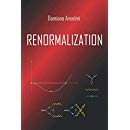We investigate the background field method with the Batalin-Vilkovisky formalism, to generalize known results, study parametric completeness and achieve a better understanding of several properties. In particular, we study renormalization and gauge dependence to all orders. Switching between the background field approach and the usual approach by means of canonical transformations, we prove parametric completeness without making use of cohomological theorems, namely show that if the starting classical action is sufficiently general all divergences can be subtracted by means of parameter redefinitions and canonical transformations. Our approach applies to renormalizable and non-renormalizable theories that are manifestly free of gauge anomalies and satisfy the following assumptions: the gauge algebra is irreducible and closes off shell, the gauge transformations are linear functions of the fields, and closure is field-independent. Yang-Mills theories and quantum gravity in arbitrary dimensions are included, as well as effective and higher-derivative versions of them, but several other theories, such as supergravity, are left out.
Phys. Rev. D 89 (2014) 045004 | DOI: 10.1103/PhysRevD.89.045004
Let $S(\Phi,U,K,K_{U})$ denote the solution of the master equation $(S,S)=0$, where $\{\Phi ^{A},U\}$ are the fields and $\{K_{A},K_{U}\}$ are the sources coupled to the $\Phi ^{A}$- and $U$-gauge transformations. If we replace $U$ with the solution $U^{*}(\Phi ,K,K_{U})$ of the $U$-field equations
\begin{equation}
\frac{\delta _{r}S}{\delta U}=0,
\end{equation}
then the action
\begin{equation}
S^{*}(\Phi ,K,K_{U})=S(\Phi ,U^{*}(\Phi ,K,K_{U}),K,K_{U})
\end{equation}
satisfies the master equation $(S^{*},S^{*})=0$ in the reduced set of fields and sources $\Phi,K$.
The classical action of quantum gravity, determined by renormalization, contains infinitely many independent couplings and can be expressed in different perturbatively equivalent ways. We organize it in a convenient form, which is based on invariants constructed with the Weyl tensor. We show that the FLRW metrics are exact solutions of the field equations in arbitrary dimensions, and so are all locally conformally flat solutions of the Einstein equations. Moreover, expanding the metric tensor around locally conformally flat backgrounds the quadratic part of the action is free of higher derivatives. Black-hole solutions of Schwarzschild and Kerr type are modified in a non-trivial way. We work out the first corrections to their metrics and study their properties.
JHEP 1305 (2013) 028 | DOI: 10.1007/JHEP05(2013)028
Welcome to RENORMALIZATION.COM
Here you can read papers, theorems and books about renormalization and quantum field theory in general, as well as discuss about open problems, address new projects and ideas. More details here
For queries and suggestions send an email to r enor mal ize@r enor mal izat ion.c om
Consider a functional integral
\[
\mathcal{I}=\int [\mathrm{d}\varphi ]\hspace{0.02in}\exp \left( -S(\varphi)+\int J\left( \varphi -bU\right) \right) ,
\]
where $U(\varphi ,bJ)$ is a local function of $\varphi$ and $J$, and $b$ is a constant. Then there exists a perturbatively local change of variables
\[
\varphi =\varphi (\varphi ^{\prime },b,bJ)=\varphi ^{\prime }+\mathcal{O}(b),
\]
expressed as a series expansion in $b$, such that
\[
\mathcal{I}=\int [\mathrm{d}\varphi ^{\prime }]\hspace{0.02in}\exp \left(
-S^{\prime }(\varphi ^{\prime },b)+\int J\varphi ^{\prime }\right) ,
\]
where $S^{\prime }(\varphi ^{\prime },b)=S(\varphi (\varphi^{\prime },b,0))$.

 Quantum Gravity
Quantum Gravity 


